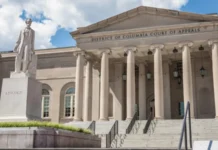Are the American People Being Mislead by the Treasury, Federal Reserve Board and FDIC?
Since the creation of the Federal Reserve the average amount of fiat dollars in circulation has traditionally been on the incline. Likewise, the amount of risk that lending institutions have undertaken has increased. Now, will the new roll out of the Bank Term Funding Program (BTFP) as the Federal Reserve Board has announced, create a financial environment where banking institutions carry less liability and take on even more risk?
Silicon Valley Bank (SVB)
Silicon Valley Bank was the Nation’s 16th largest banking institution heavily focused on the tech industry and many of its depositors were tech-based venture capital backed companies. According to reports, the FDIC said in a statement that SVB had over $209 billion in assets and $174.5 billion in deposits on March 10th during its failure.
On Thursday March 9th Silicon Valley Bank announced plans to raise up to $1.75 billion in an effort to strengthen its capital positions amidst a contentious economic environment led by high interest rates. According to reports, venture capital financing began to diminish, which caused companies in the tech industry to struggle to obtain financing. As a result, companies with deposits in SVB began to withdraw their deposits from Silicon Valley Bank. In order for SVB to meet the high demand of withdraws, they began to sell bonds at a loss due to the increases in interest rates.
FDIC Steps in and Announces All Deposits Will Be Insured
By noon on Friday March 10th the FDIC stepped in and took over Silicon Valley Bank. It also created a quasi-banking institution now called the DINB, (Deposit Insurance National Bank) in an effort to acquire all of the assets with SVB and sell those assets until all depositors with SVB can obtain their money back.
However, the FDIC can only insure up to $250,000 per depositor. On Sunday March 12th a joint statement by the Unites States Treasury, FDIC and the Federal Reserve made clear that, “After receiving a recommendation from the boards of the FDIC and the Federal Reserve, and consulting with the President, Secretary Yellen approved actions enabling the FDIC to complete its resolution of Silicon Valley Bank, Santa Clara, California, in a manner that fully protects all depositors. Depositors will have access to all of their money starting Monday, March 13. No losses associated with the resolution of Silicon Valley Bank will be borne by the taxpayer.”
Is that last sentence, potentially a misleading statement?
On a press release the Federal Reserve Board announced, “The additional funding will be made available through the creation of a new Bank Term Funding Program (BTFP), offering loans of up to one year in length to banks, savings associations, credit unions, and other eligible depository institutions pledging U.S. Treasuries, agency debt and mortgage-backed securities, and other qualifying assets as collateral. These assets will be valued at par. The BTFP will be an additional source of liquidity against high-quality securities, eliminating an institution’s need to quickly sell those securities in times of stress.”
The press release added, “With approval of the Treasury Secretary, the Department of the Treasury will make available up to $25 billion from the Exchange Stabilization Fund as a backstop for the BTFP. The Federal Reserve does not anticipate that it will be necessary to draw on these backstop funds.”
There are two concerning issues with the last two statement.
- Banking institutions can now hold on to their assets while the BTFP provides additional liquidity eliminating the institutions need to quickly adjust and sell assets as needed.
- How can the taxpayers ensure that no losses will be borne by them?
BTFP provides additional liquidity
With the added safeguard by the BTFP and the $25 billion in Exchange Stabilization Fund (ESF), it may give the impression that banking institutions can now take on a higher degree of investment risk as a new program is established to provide added liquidity to the industry. According to Edelweiss Capital Research, the BTFP “does not address the fundamental challenge confronting banks, which is their exposure to longer-term fixed-rate securities exceeding $4.7 trillion that generate lower yields than the BTFP. Consequently, availing of this funding mechanism would result in a negative interest carry for the banks. It does, however, avoid the need to realize losses on these securities.”
Their research statement continues, “The BTFP now allows banks to borrow 100% of the par value of AFS (Available for Sale Securities) and HTM (Held to Maturity Securities) at 10bp above the overnight rate. While this means they don’t have to sell the securities (and losses remain unrealized), the cost of the facility is higher than the average yield of those securities, so banks would only make use of this facility in case their customer deposits drop significantly.”
No Losses Will Be Borne by Taxpayers
For all intent and purpose, inflation is an invisible tax on the taxpayers. As such, the BTFP may have an indirect affect on how borrowed money by banking institution is paid off on the backs of the American taxpayers.
Since the creation of the Federal Reserve, inflation is a way to help banks pay off any funding debt owed at a reduced rate. This new program may incentivize banking institutions to keep a higher than moderate inflation rate by printing more money in an effort to pass the cost to the American taxpayers by reducing the value of the currency. As a result, the taxpayer may not see a bailout of the magnitude that was presented in the economic collapse over a decade ago. However, they may see a prolonged period of inflation that will inevitably eat away at savings for every individual in the Nation.
Fractional Reserve Banking Affects Inflation Rate
This does complicate the precarious inflation rate issue currently present. In my analysis, as the Federal Reserve is trying to increase interest rates in order to reduce inflation, the system is nonetheless, incentivized to find ways of maintaining a higher than usual inflation rate to fix their banking problems, while protecting shareholders and preventing an economic collapse.
With fractional reserve banking, banking institutions are only required to maintain a fraction of their deposits as reserves. Allowing them to free up additional funding for lending purposes. Thereby limiting the amount of funds that are available for withdraw. Based on the amount of reserves required, this can increase or decrease the “new money” supply available in the economic system. More new money increases the inflation rate and eats away at taxpayer savings. It’s the invisible tax many know about but can’t see.
Questions, comments or if you want to advertise locally in the People’s Olive Branch, reach out to us at peoplesolivebranch@protonmail.com













